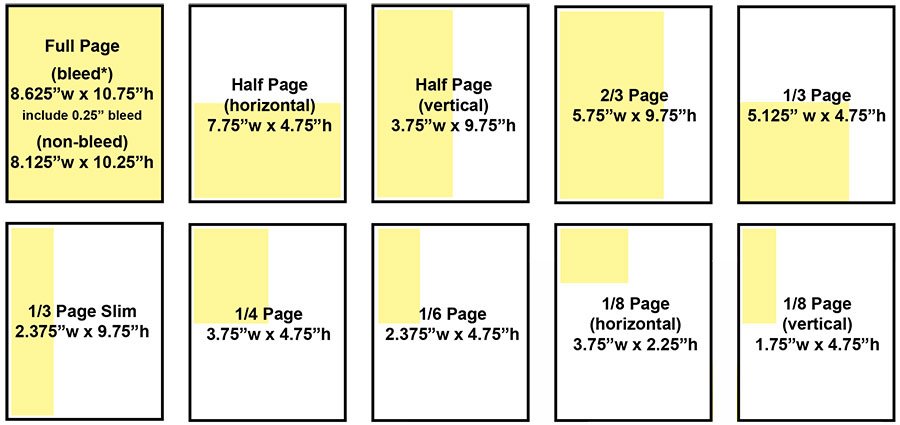The standard size of a magazine is typically 8.5 by 11 inches, resembling the dimensions of a standard sheet of paper. Magazines come in various shapes and sizes, ranging from small pocket-sized publications to larger, more luxurious formats. The size of a magazine plays a crucial role in its design and layout, influencing how content is organized and presented to readers. Join us as we delve deeper into the world of magazine dimensions and explore the creative possibilities that different sizes offer. What is the size of a magazine? Let’s find out!
What is the Size of a Magazine
Welcome, young readers! Have you ever wondered about the size of a magazine? Magazines come in various shapes and sizes, and each one is unique in its own way. In this article, we will explore the different sizes of magazines, why size matters, and how the dimensions of a magazine can impact your reading experience. So, let’s dive in and discover the world of magazine sizes!
Standard Sizes of Magazines
Magazines are typically printed in standard sizes to ensure they fit well on shelves, in mailboxes, and in your hands. The most common sizes for magazines are:
1. Digest
The digest size is compact and easy to carry around. It is usually around 5.5 by 8.5 inches, making it perfect for reading on the go. Digest-sized magazines are popular for their convenience and portability.
2. Standard
The standard magazine size is a bit larger, typically measuring around 8.25 by 10.75 inches. This size offers more space for content and photographs, providing a visually appealing reading experience.
3. Tabloid
The tabloid size is even larger, usually around 11 by 17 inches. Tabloid-sized magazines are often used for newspapers and publications with a focus on visual content. The larger size allows for impactful images and layouts.
Why Size Matters
Now, you might be wondering why the size of a magazine is important. The size of a magazine can affect several aspects of your reading experience, including:
1. Readability
The size of the text and images in a magazine can impact how easy it is to read. A larger magazine size may allow for bigger fonts and clearer images, making it more comfortable for you to enjoy the content.
2. Design and Layout
The size of a magazine influences its design and layout. A larger magazine size provides more room for creative layouts, eye-catching designs, and stunning visuals. Designers often use the size of a magazine to create a visually appealing reading experience.
3. Portability
The size of a magazine also affects its portability. Smaller magazines are easier to carry around and read on the go, while larger magazines may be better suited for reading at home or in a relaxed setting. Consider where and when you like to read magazines when choosing a size that fits your lifestyle.
Impact of Size on Content
The size of a magazine can also impact the type of content it contains. Depending on the size, magazines may focus on different topics and target various audiences:
1. Small Magazines
Smaller magazines, such as digest-sized ones, are often used for niche topics or specific interests. These magazines may have a loyal readership and focus on in-depth articles or specialized content.
2. Standard Magazines
Standard-sized magazines cater to a broader audience and cover a wide range of topics. These magazines may include lifestyle, fashion, travel, and other popular subjects to appeal to a diverse readership.
3. Large Magazines
Tabloid-sized magazines usually feature extensive visual content, such as photography, illustrations, and infographics. These magazines are known for their captivating visuals and bold layouts that draw readers in with striking imagery.
Choosing the Right Size for You
When selecting a magazine to read, consider the size that best suits your preferences and reading habits. Think about where you like to read, what topics interest you, and how you want to engage with the content. Whether you prefer a compact digest size for portability or a larger tabloid size for immersive visuals, there is a magazine size out there for everyone!
Now that you know more about the size of magazines, you can explore the world of print publications with a better understanding of how size can impact your reading experience. So, grab your favorite magazine, find a cozy reading nook, and dive into the wonderful stories and beautiful images waiting for you inside!
Happy reading!
Introduction to Magazine Design: Choosing a Size
Frequently Asked Questions
What are the standard sizes of a magazine?
Magazines come in different sizes depending on the type and format. The most common sizes are standard letter size (8.5 x 11 inches), digest size (5.5 x 8.5 inches), and tabloid size (11 x 17 inches).
How does the size of a magazine affect its content and layout?
The size of a magazine can influence its design and content presentation. Larger magazines may allow for more images and text per page, while smaller magazines might have a more compact layout with fewer elements.
Are there variations in magazine sizes based on country or publication type?
Yes, magazine sizes can vary based on the country of publication and the specific type of magazine. For example, European magazines often have different standard sizes compared to those in the United States. Additionally, specialized publications like art magazines or niche journals may opt for custom sizes.
Final Thoughts
Magazines come in various sizes, but a standard magazine is typically around 8.5 by 11 inches in dimensions. This size allows for easy handling and comfortable reading for most individuals. Understanding what is the size of a magazine will help in designing layouts and selecting appropriate images. Therefore, when creating content for magazines, it’s essential to consider the size to ensure a visually appealing final product.

